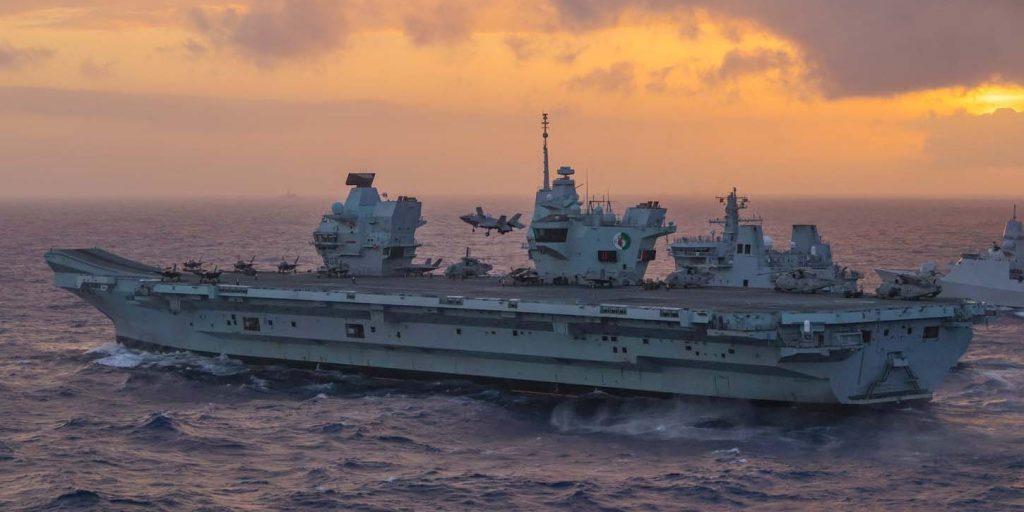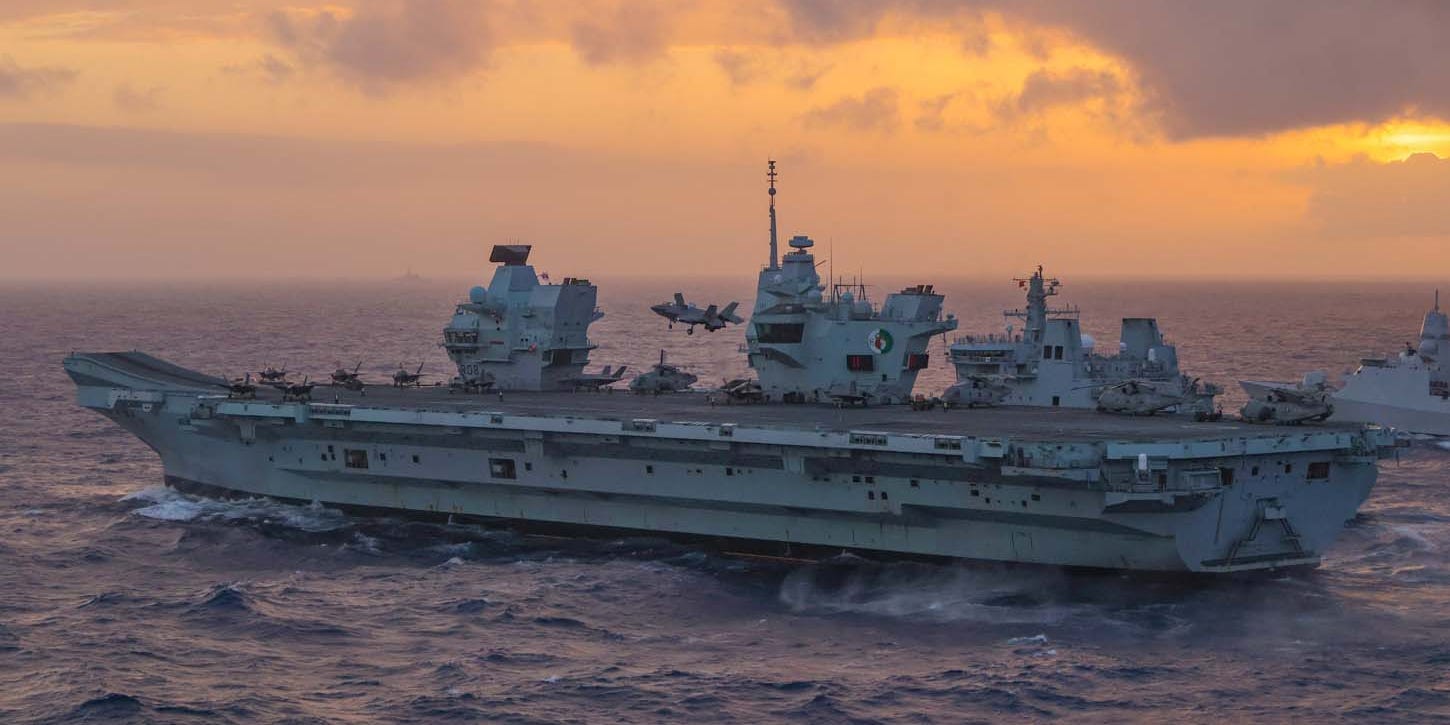
- With HMS Queen Elizabeth and HMS Prince of Wales, the British navy once again has aircraft carriers.
- They hit a milestone this year, conducting simultaneous exercises with fixed-wing jets for the first time.
- Those drills were on opposite sides of the world, reflecting the global reach Britain is seeking.
In September, the Royal Navy announced that its two Queen Elizabeth-class aircraft carriers conducted simultaneous exercises with fixed-wing aircraft for the first time.
The drills involved launching and recovering F-35Bs, the short-takeoff and vertical-landing version of the stealth fighter, from HMS Prince of Wales in British waters and HMS Queen Elizabeth in the Pacific — 7,000 miles apart.
It marked the start of a busy fall for Britain's two new carriers, which the Royal Navy calls "the nation's flagships."
Queen Elizabeth-class
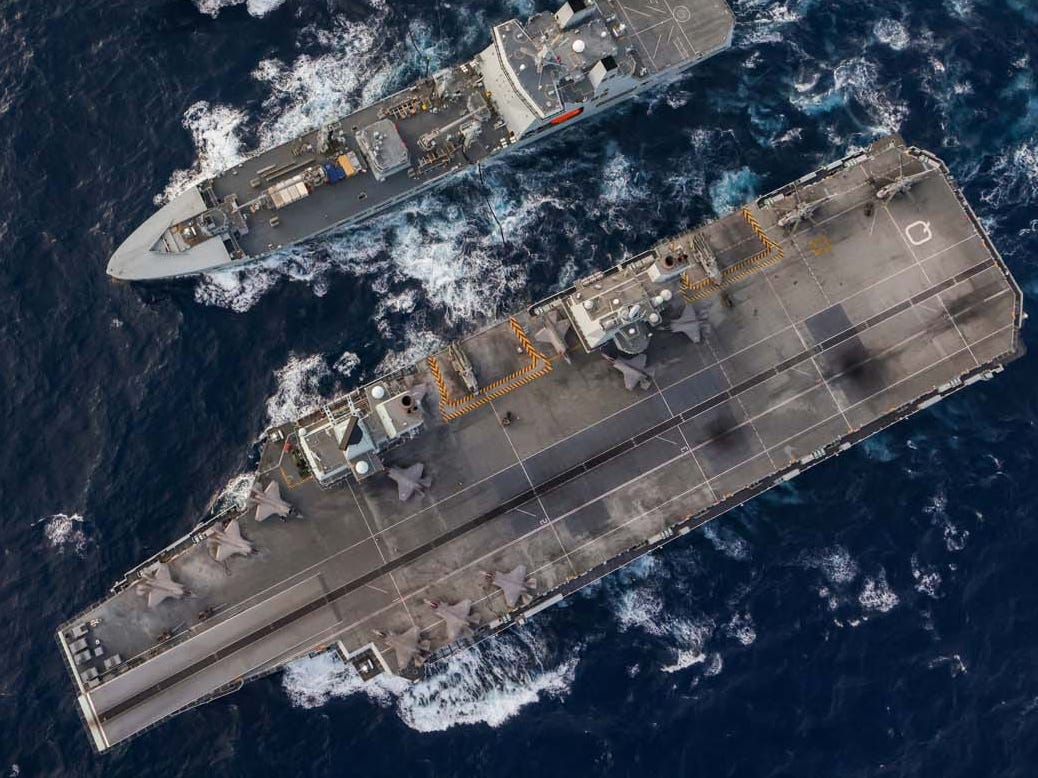
The decommissioning of the last Invincible-class aircraft carrier, HMS Illustrious, left the Royal Navy without any aircraft carriers for the first time in nearly a century. With the commissioning of HMS Queen Elizabeth and HMS Prince of Wales, the UK now has two fully operational and completely modern flattops.
At 65,000 tons and 920 feet long, the Queen Elizabeth-class carriers are nearly three times larger than the Invincible-class carriers they replace, and they have a number of improvements.
Though not nuclear-powered, they have an integrated electric propulsion system consisting of two Rolls-Royce MT30 gas turbines and four Wärtsilä 38 Marine diesel engines. They each have a range of about 10,000 miles.
The most noticeable feature are the two islands, rather than one, on the carriers' decks. The forward island handles navigation, while the aft island handles flight control for the carrier's air wing.
The dual-island set up provides some unique benefits, allowing for greater visibility, increased survivability, a larger flight deck and more efficient use of space, and reduced air turbulence over the flight deck. It also integrates the two exhaust stacks each ship was required to have.
The ideal air wing would include 36 F-35B fighters and at least four helicopters, likely a combination of Merlin Mk2 or Mk4s and Wildcat AH1s. The extra space, however, can accommodate larger air wings when necessary. The carriers can also carry Chinook helicopters and V-22 tilt-rotor aircraft.
The carriers also have a modern suite of technology and equipment. The new weapons handling system, for instance, requires just 48 crew members to operate instead of the 160 needed previously.
HMS Queen Elizabeth
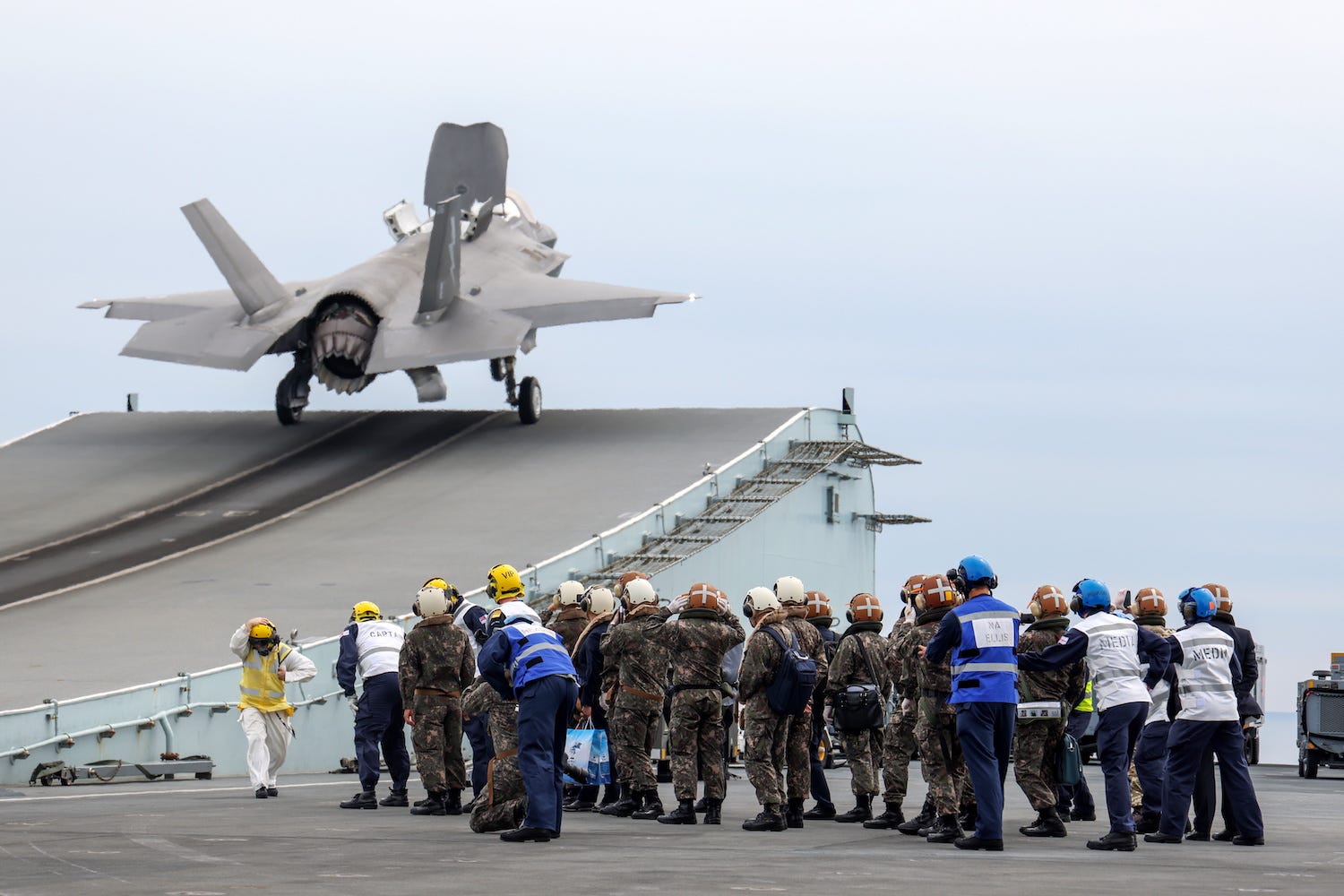
HMS Queen Elizabeth was commissioned on December 7, 2017, and has racked up an impressive resume. After three years of trials and fitting out, it formed a strike group for the first time in October 2020.
Since May this year, it has been the flagship of Carrier Strike Group 21, a task force which includes the British nuclear-powered submarine HMS Artful, Dutch Navy frigate HNLMS Evertsen, and US Navy destroyer USS The Sullivans on a 28-week deployment to 40 countries in Europe, the Pacific, and the Middle East.
It deployed with the largest fifth-generation air wing ever embarked on any ship — 10 F-35Bs from the US Marine Corps' Fighter Attack Squadron 211 and eight F-35Bs from the Royal Air Force's 617 Squadron.
The carrier also saw combat for the first time, conducting airstrikes against ISIS targets in Syria and Iraq a month into the deployment. Those strikes put the carrier and its jets in a "cat and mouse" game with Russian forces, which kept a close eye on them as they operated in the Eastern Mediterranean.
During the deployment, the carrier has trained with NATO forces in Europe, and exercised with the Singaporean, South Korean, New Zealand, Indian, Japanese, Australian, and US navies in Asia.
Most recently, Queen Elizabeth drilled with the navies of Oman and the United Arab Emirates and conducted "cross-deck" landing operations with the amphibious assault ship USS Essex in the Gulf of Oman.
The carrier is expected to return home in December and is now in the Mediterranean, where it had another, less welcome milestone: A British pilot had to bail out of an F-35B during flight operations, just the fifth F-35 to be lost to a crash.
HMS Prince of Wales
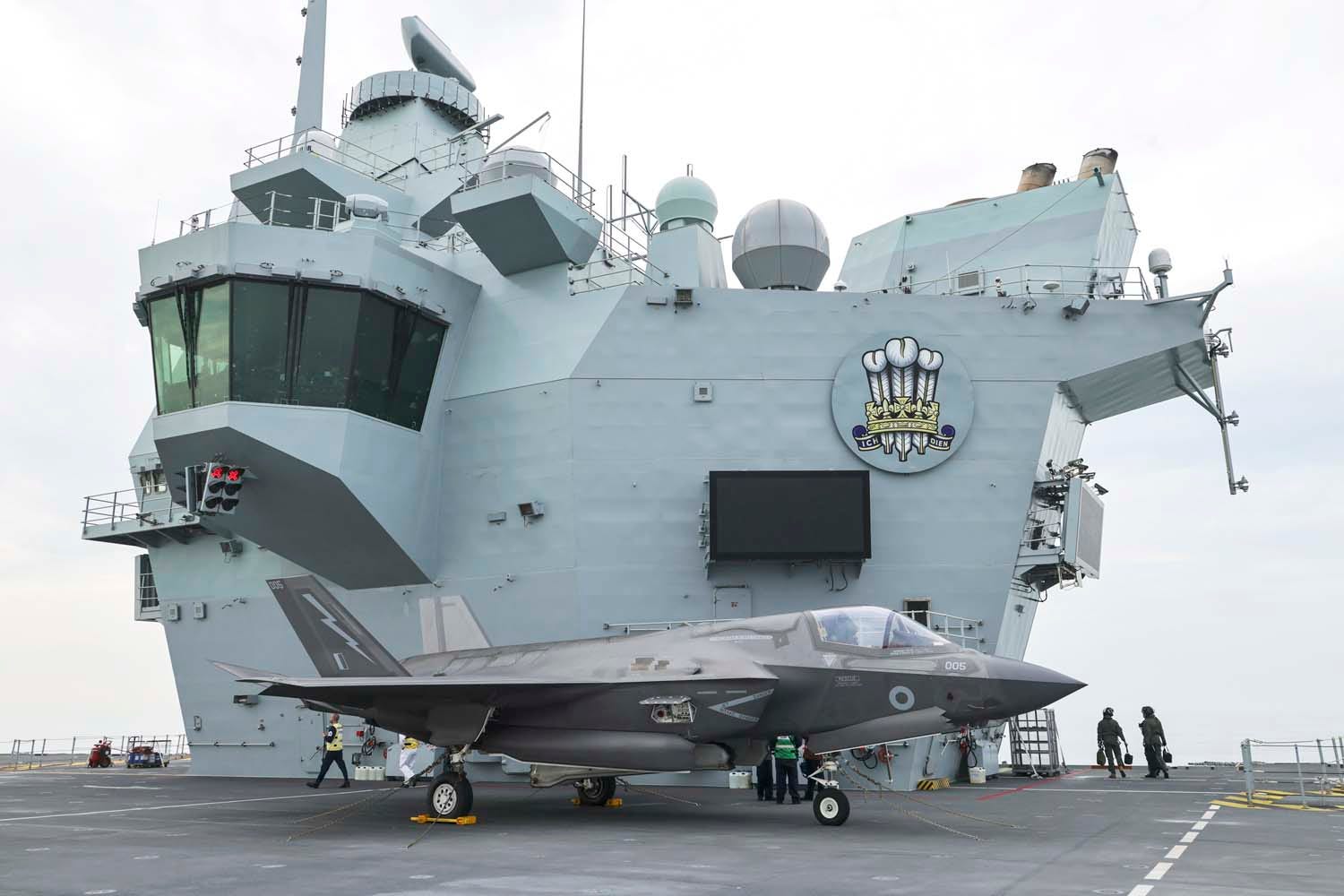
HMS Prince of Wales was commissioned on December 10, 2019. Since then, the carrier and its crew have gone through nearly two years of intense training and fitting-out work.
It has been tested with manned and unmanned aircraft and participated in the naval element of Exercise Joint Warrior 212, which was one of Europe's largest military exercises.
More than 20 ships, dozens of aircraft, and over 3,000 personnel from a dozen countries took part in the exercise, which included airborne assaults, amphibious landings, and live-fire exercises.
After Joint Warrior, HMS Prince of Wales was declared fully operational. The carrier will become NATO's command ship in 2022, making it the flagship of the alliance.
A small air wing
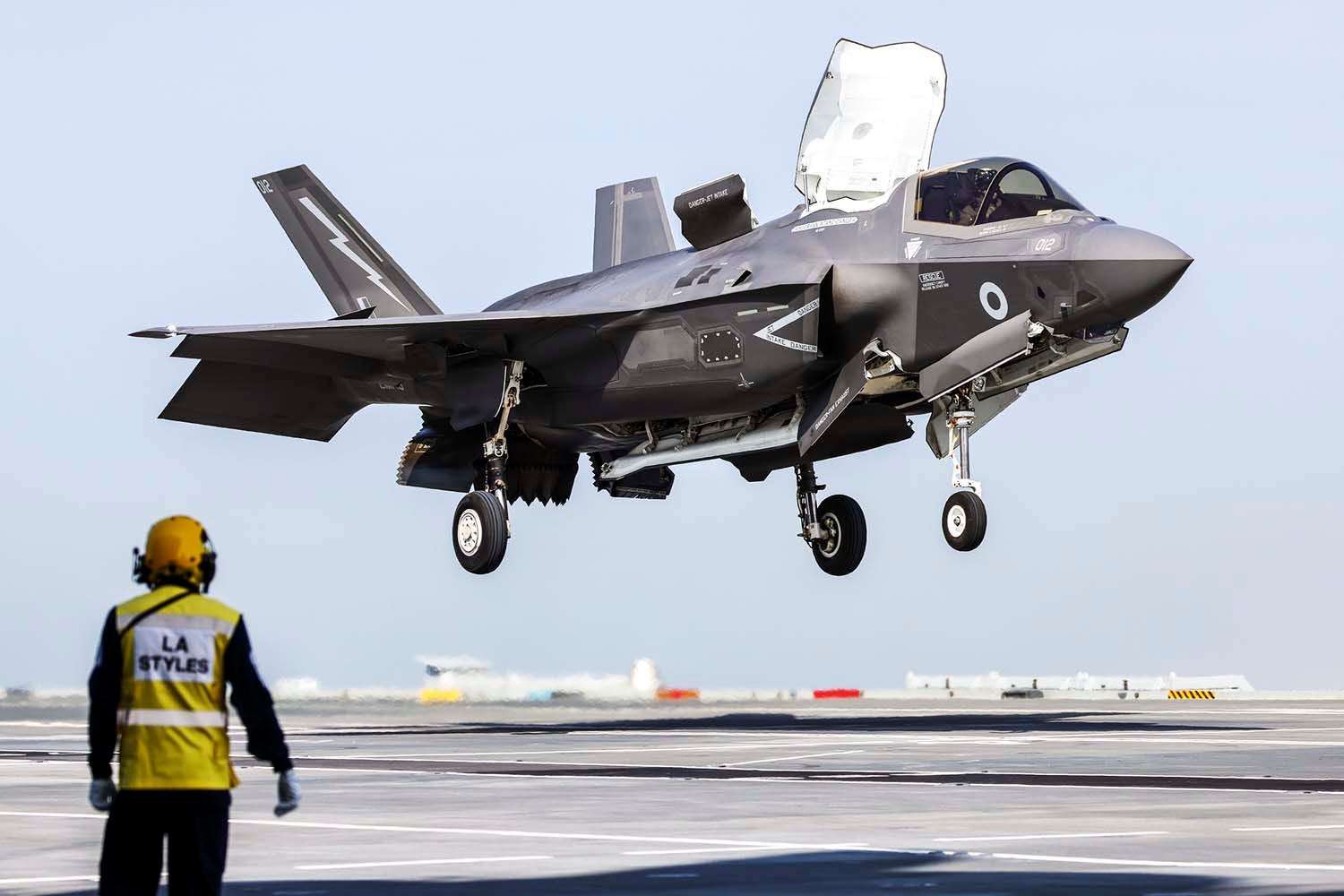
The two Queen Elizabeth-class carriers — there are no plans to build more — have been declared operational and have proved their worth in multiple exercises, but they still have issues with their air wings, specifically their small size.
With the retirement of the Harrier in 2010, the F-35B is the only fixed-wing aircraft that can operate on Britain's carriers. In 2015, the UK announced plans to acquire 138 F-35s. Only 48 have been ordered, and only 21 have been delivered — 20 after the jet lost this month — with the rest in production.
The UK's active F-35Bs are in service with the Royal Air Force, including those aboard the carriers. While some RAF F-35Bs are flown by Royal Navy pilots, the Royal Navy isn't expected to have its own operational F-35B squadron until 2023.
The small number of available British F-35s is likely one reason US Marine Corps F-35Bs have deployed aboard HMS Queen Elizabeth. Officials have touted that cooperation, but it has prompted concern that the Royal Navy may have to rely on allies to fill its carriers' hangars.
Jeremy Quin, British minister for defense procurement, has said that the UK will order more F-35s "by 2025," but he hasn't given an exact number or confirmed that the UK still plans to acquire 138.
The British military has other aircraft programs underway. The Royal Navy is looking into carrier-launched versions of the wingman drones being developed by the Royal Air Force. The UK is also developing a sixth-generation stealth fighter, known as Tempest, meant to surpass current fifth-generation jets.
Despite concerns about the air wing, the number and variety of aircraft that the new British aircraft carriers can carry mean the Royal Navy will soon again boast one of the strongest carrier forces in the world.
